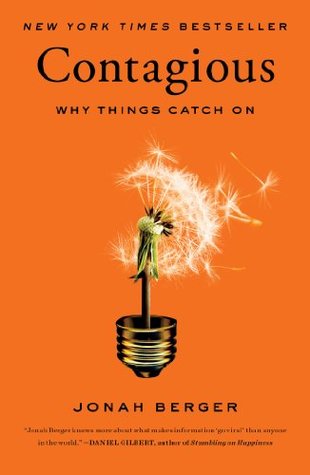More on this book
Community
Kindle Notes & Highlights
One reason some products and ideas become popular is that they are just plain better.
Another reason products catch on is attractive pricing.
Advertising also plays a role. Consumers need to know about something before they can buy it.
When trying to explain why Olivia became a more popular name than Rosalie, familiar explanations like quality, price, and advertising get stuck.
The things others tell us, e-mail us, and text us have a significant impact on what we think, read, buy, and do.
Word of mouth is the primary factor behind 20 percent to 50 percent of all purchasing decisions.
Word of mouth is more effective than traditional advertising for two key reasons. First, it’s more persuasive.
Second, word of mouth is more targeted.
Word of mouth, on the other hand, is naturally directed toward an interested audience.
what percent of chatter happens over social media, blogs, e-mail, and chat rooms? If you’re like most people you probably guessed something around 50 or 60 percent.
The actual number is 7 percent.
the first issue with all the hype around social media is that people tend to ignore the importance of offline word of mouth, even though offline discussions are more prevalent, and potentially even more impactful, than online ones.
The second issue is that Facebook and Twitter are technologies, not strategies.
Harnessing the power of word of mouth, online or offline, requires understanding why people talk and why some things get talked about and shared more than others. The psychology of sharing. The science of social transmission.
by focusing so much on the messenger, we’ve neglected a much more obvious driver of sharing: the message.
Contagious content is like that—so inherently viral that it spreads regardless of who is doing the talking.
Not only did Blendtec blenders demolish all these objects, but their video series, titled Will It Blend?, received more than 300 million views. Within two years the campaign increased retail blender sales 700 percent.
Virality isn’t born, it’s made.
The same research tools used in biology and chemistry could be used to understand social influence and interpersonal communication.
By “contagious,” I mean likely to spread. To diffuse from person to person via word of mouth and social influence. To be talked about, shared, or imitated by consumers, coworkers, and constituents.
Six key STEPPS, as I call them, that cause things to be talked about, shared, and imitated.
We need to make our message so integral to the narrative that people can’t tell the story without it.
if something is supposed to be secret, people might well be more likely to talk about it. The reason? Social currency. People share things that make them look good to others.
research finds that more than 40 percent of what people talk about is their personal experiences or personal relationships.
sharing personal opinions activated the same brain circuits that respond to rewards like food and money.
Maybe instead of giving people a penny for their thoughts, we should get paid a penny for listening.
choices signal identity.
Just as people use money to buy products or services, they use social currency to achieve desired positive impressions among their families, friends, and colleagues.
There are three ways to do that: (1) find inner remarkability; (2) leverage game mechanics; and (3) make people feel like insiders.
the most important aspect of remarkable things is that they are worthy of remark.
Remarkability also shapes how stories evolve over time.
Often we’re not even trying to exaggerate; we just can’t recall all the details of the story. Our memories aren’t perfect records of what happened.
stories often become more extreme or entertaining, particularly when people tell them in front of a group.
One way to generate surprise is by breaking a pattern people have come to expect.
What do we do when confronted with a controversial mystery like this? Naturally, we ask others to help us sort out the answer.
it’s possible to find the inner remarkability in any product or idea by thinking about what makes that thing stand out.
Good game mechanics keep people engaged, motivated, and always wanting more.
People don’t just care about how they are doing, they care about their performance in relation to others.
Game mechanics help generate social currency because doing well makes us look good.
Leveraging game mechanics requires quantifying performance.
Leveraging game mechanics also involves helping people publicize their achievements.
Scarcity and exclusivity help products catch on by making them seem more desirable.
McDonald’s figured out a clever way to increase demand for the McRib.
It just made the product scarce.
All for what is mostly a mix of tripe, heart, and stomach meat.
as soon as you pay people for doing something, you crowd out their intrinsic motivation.
Every day, the average American engages in more than sixteen word-of-mouth episodes, separate conversations where they say something positive or negative about an organization, brand, product, or service.
Some word of mouth is immediate, while some is ongoing.
interesting products did not sustain high levels of word-of-mouth activity over time.
Sights, smells, and sounds can trigger related thoughts and ideas, making them more top of mind.


